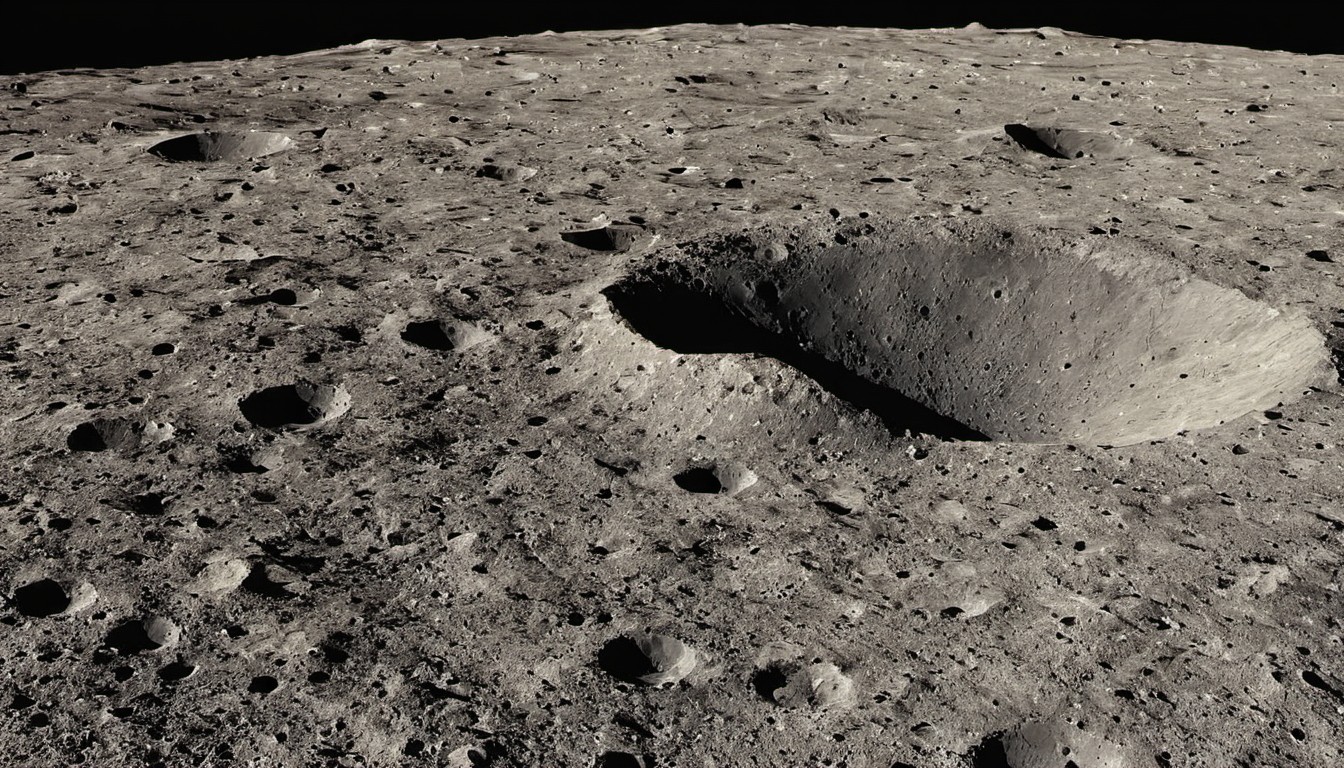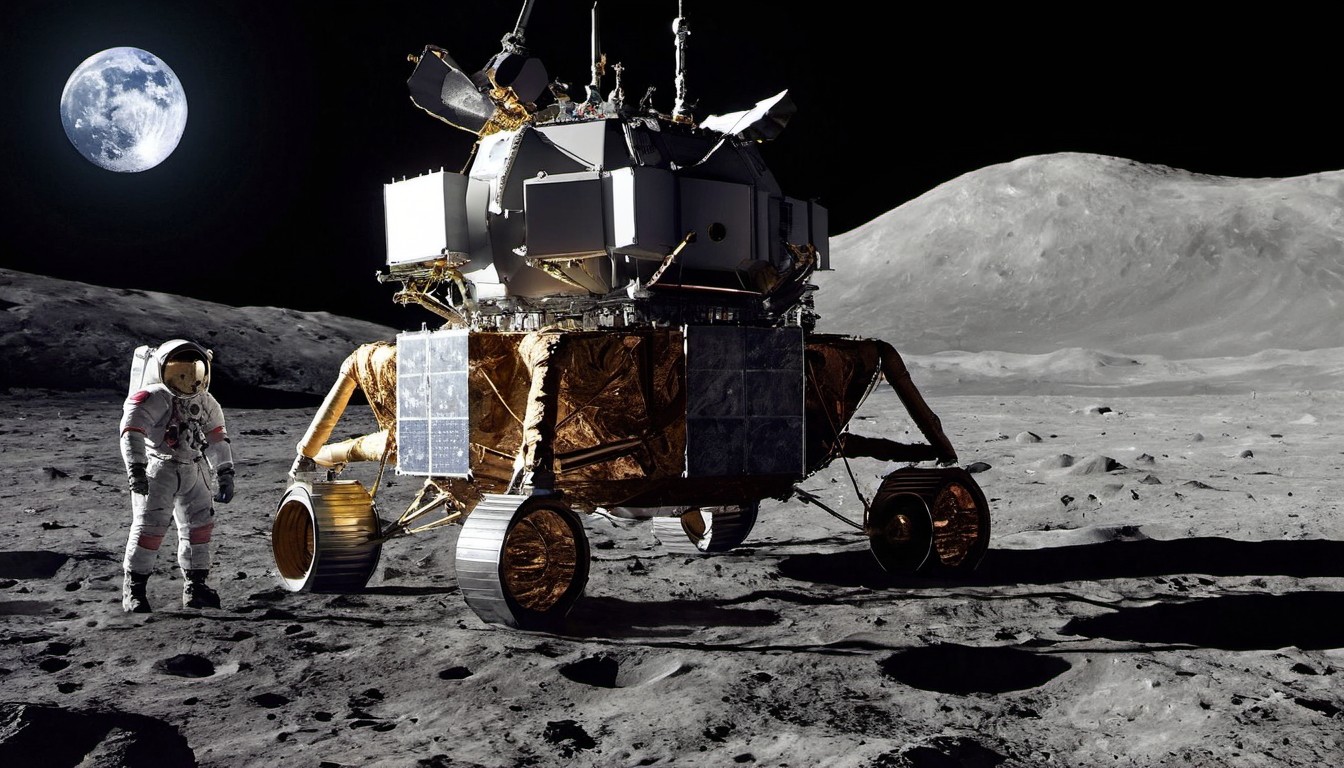The Moon is thought to have formed about 4.5 billion years ago, not long after Earth. The most widely accepted theory is the Giant Impact Hypothesis. According to this theory, a Mars-sized body called Theia collided with the early Earth, and the debris from this impact eventually coalesced to form the Moon. This explains why the Moon has a similar composition to Earth’s outer layers.
The early Moon was much closer to Earth and looked much larger in the sky. Over time, tidal interactions between the Earth and the Moon caused the Moon to slowly move away from Earth. Today, the Moon is drifting away at a rate of about 3.8 centimeters per year.
The Surface of the Moon
The Moon’s surface is covered with craters, mountains, and vast plains called maria. These features were formed by ancient volcanic activity and impacts from asteroids and comets. The maria are large, dark basaltic plains created by ancient volcanic eruptions. They are less cratered than the highlands because they are younger.
The Moon has no atmosphere to protect it from meteoroids, so its surface is constantly bombarded by space debris. This bombardment has created a layer of fine dust and rocky debris called regolith. The regolith can be several meters deep in some places and gives the Moon its characteristic gray appearance.
Phases of the Moon
The Moon goes through a cycle of phases as it orbits Earth, which takes about 29.5 days. This cycle is called a lunar month. The phases of the Moon are new moon, waxing crescent, first quarter, waxing gibbous, full moon, waning gibbous, last quarter, and waning crescent. These phases are caused by the changing angles of sunlight hitting the Moon as it orbits Earth.
During a new moon, the Moon is between Earth and the Sun, and its illuminated side faces away from us, making it invisible in the night sky. As the Moon moves in its orbit, more of its illuminated side becomes visible, leading to the full moon when the entire face of the Moon is illuminated. The cycle then reverses, with the Moon appearing to shrink until it returns to the new moon phase.
The Moon’s Influence on Earth
The Moon plays a crucial role in stabilizing Earth’s climate and axis. Its gravitational pull creates tides in Earth’s oceans, which helps to regulate the climate by distributing heat around the globe. The tidal forces also slow down Earth’s rotation over time, leading to longer days.
The Moon’s gravitational influence is also responsible for the phenomenon of tidal locking. This is why we always see the same side of the Moon from Earth. The Moon’s rotation period is exactly the same as its orbit period around Earth, which means the same side always faces us.
Exploration of the Moon
 Humans have always been fascinated by the Moon, but it wasn’t until the 20th century that we were able to explore it directly. The first successful mission to the Moon was the Soviet Luna 2, which crash-landed on its surface in 1959. The most famous missions are NASA’s Apollo program, which landed the first humans on the Moon in 1969 with Apollo 11.
Humans have always been fascinated by the Moon, but it wasn’t until the 20th century that we were able to explore it directly. The first successful mission to the Moon was the Soviet Luna 2, which crash-landed on its surface in 1959. The most famous missions are NASA’s Apollo program, which landed the first humans on the Moon in 1969 with Apollo 11.
Since the Apollo missions, several robotic missions have been sent to study the Moon. These missions have helped us learn more about the Moon’s composition, geology, and history. Future plans include returning humans to the Moon and establishing a permanent lunar base for scientific research and exploration.
